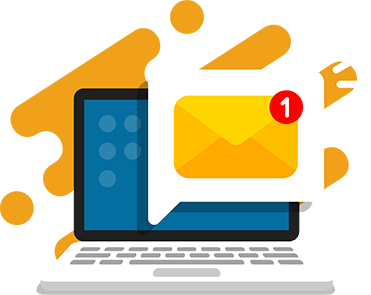Kids who want to learn to code have more options than ever to get started. Whatever they’re interested in, there is an abundance of websites, apps, games, and coding books for kids to get them up and running quickly.
There are so many things they can do when kids learn how to code. They can build video games, create animations, develop mobile apps, and launch websites.
If your child learns best through reading and writing, a book may be the first place you start. Coding books for kids are not one size fits all. Below, you’ll learn how to spot a good coding book and how to differentiate between the multitude of current programming languages. Then, you can pick the right book for your child’s experience level and interest.
Find the best programming books for kids here!
Coding Book for Kids
What Makes An Excellent Programming Book for Kids
Best Computer Coding Books for Kids by Language
Mobile Development Books for Kids
Game Development Books for Kids
Robotics and IoT Programming Books for Kids
Best Programming Books for Kids by Age Group
What Makes An Excellent Programming Book for Kids
Whether you’re browsing for a child who has never written a line of code before or looking for material to boost the skills of an accomplished young programmer, recognizing a good coding book is simple.
Covers the Basics
All programming languages have a few things in common, things that are important for kids to learn early if they are to be successful coders. When flipping through coding books for beginners, take note of whether they cover:
- basic math operators for addition, subtraction, multiplication, and division
- variables
- if/then statements
- loops and functions
You don’t need to understand how these concepts work. Just make sure they’re covered in any title you consider for a beginning programmer. They should be among the first items discussed. If they’re not present, the book isn’t appropriate for novices.
Recommended: Free & Paid Coding Websites for Kids
Focuses on One Coding Language
With the exception of general computer science and programming publications, a good coding book for kids covers just one language.
- For students ages 8-10, we recommend starting with Scratch and moving into HTML/CSS and JavaScript after.
- For students ages 11-13, we recommend starting with Python and moving into HTML/CSS and JavaScript, at an advanced level, after.
- For students ages 14-18, we recommend starting with Python or Java and then switching to the other.
You won’t find many books about more than one language, so, if you don’t know which one your child should learn, consider getting books about two or three different languages.
Has Plenty of Photos and Illustrations
It’s also important for a book to be visually appealing, especially for kids who are learning to code for the first time. Many of the best coding books for kids have colorful illustrations on every page, which keep kids focused and interested.
Provides Useful, Transferable Knowledge
Learning a specific language isn’t as important as gaining an understanding of fundamental coding concepts. Beginning coders can start with almost any language and move into others with minimal difficulty. There are a few languages that might be inappropriate for kids, such as C and C++, because even many adult learners struggle with learning these.
Recommended: Coding Games for Kids
Best Computer Coding Books for Kids by Language
Scratch Books for Kids
Scratch is a popular block programming language designed for kids. It’s easy to learn and introduces children to coding in an easy-to-understand format. After exploring Scratch thoroughly, many kids will be ready to progress to text-based languages like Python.
Coding with Scratch Workbook
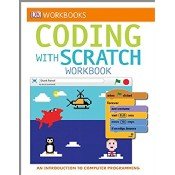
Age Range: 10+
Best Because: Highly visual workbook that illustrates tasks step by step in Scratch. Reads more like a picture book than a textbook, but teaches conditionals, math equations, and basic programming skills. Kids can create games that they share and test their knowledge with quizzes for each section. It’s easy to follow and kids can use these projects to inspire their own ideas too.
Learn to Program with Scratch
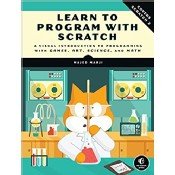
Age Range: 10+
Best Because: This nearly 300-page book covers everything a beginning coder needs to know about the Scratch language. It begins by directing kids to the Scratch website, and they’ll be coding before they’ve read more than two pages from the first chapter. Readers learn about variables, conditionals, lists, and all the other key components of coding. After finishing this book, kids will have a solid grasp of Scratch and programming fundamentals that will apply to almost any language.
Scratch for Kids, for Dummies
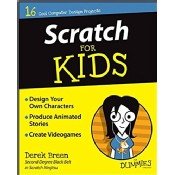
Age Range: 10-14
Best Because: To establish a solid foundation in Scratch and general programming knowledge, Scratch for Kids teaches readers how to design and animate their own characters. They’ll learn about variables, if/then statements, loops, and basic programming logic while building 16 projects.
The Official ScratchJr Book: Help Your Kids Learn to Code
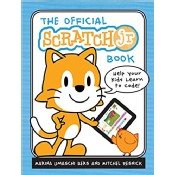
Age Range: 5-9
Best Because: For kids who are still a bit too young to learn Scratch, there’s ScratchJr, an even-simpler block programming language. This short guide gets kids acquainted with ScratchJr, walks them through several fun projects, and establishes a firm grasp of programming they’ll use in all their future programming endeavors.
The Official ScratchJr Book: Help Your Kids Learn to Code
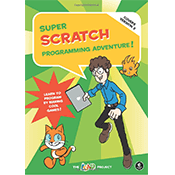
Age Range: 7+
Best Because: This book complements the Scratch coding app, guiding kids through programming principles and experiments. Kids will enjoy the book since it employs a comic-book style and includes projects inspired by classic arcade games.
Your child can learn to code from home.
Try our live, online coding classes for kids risk-free.
Python Books for Kids
Nothing beats Python when it comes to easy text-based programming languages for beginners. It’s also powerful and works for all kinds of software, including applications for the web. We often recommend Python for kids and they’re usually excited to hear that the world’s second-largest search engine, YouTube, runs on Python.
Python for Kids
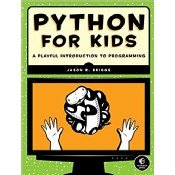
Age Range: 10+
Best Because: Few books about Python, or any programming language, are as thorough yet easy to follow as Python for Kids. The material in this book is suitable for elementary school kids, but it’s detailed enough even for many adult learners. The first chapters cover downloading and installing Python. From there, the book describes the Python programming environment, which is simply the interface used to write code. It then shows readers how to save their programs and covers an enormous amount of important coding knowledge.
Coding Projects in Python
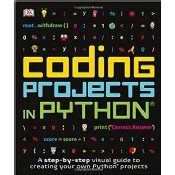
Age Range: 9-12
Best Because: Whether they’ve learned a block language such as Scratch or haven’t done any programming at all, kids will find everything they need to build software in this slick volume. The first chapter covers downloading and installing Python and writing and saving programs. The glossary and reference sections in the back of this book are helpful and should be useful to kids even after they’ve finished the book and want to build new projects.
Python in Easy Steps
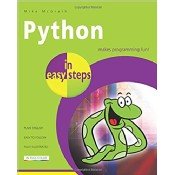
Age Range: 11+
Best Because: Mike McGrath, the author of Python in Easy Steps, has written several programming books for the In Easy Steps series and does a fantastic job of presenting coding concepts in small, digestible chunks. This book isn’t specifically for kids, but it’s so well organized that middle schoolers, especially those with some experience in Scratch or another language, can easily understand it.
By the end of this book, readers will be able to build simple web pages and write desktop applications in Python.
Hello World! Computer Programming for Kids and Other Beginners
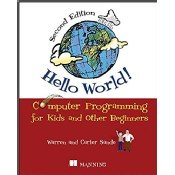
Age Range: 12+
Best Because: When learning to code, the first program most people write in any language simply displays the words “Hello World” on the screen. Scores of coding books for kids and adults start out with this straightforward script. It’s easy to write and familiarizes new programmers with some of the most basic features of a language. This book follows that tradition and quickly moves into the requisite skills coders need to build useful software of any kind.
Java Coding Books for Kids
Java is an immensely popular language used to build programs for all types of operating systems as well as Android devices. It’s also the most common language in high school computer science programs.
Java Programming for Kids: Learn Java Step by Step and Build Your Own Interactive Calculator for Fun!

Age Range: 13-17
Best Because: Java is fun and easy with the simple instructions presented here. Teenage readers get an explanation of the Java programming language, instructions for downloading and installing everything needed to code in Java, plus thorough guidance for building an interactive calculator app.
Java for Kids (and grown-ups!): Learn to Code and Create Your Own Projects with Java 8
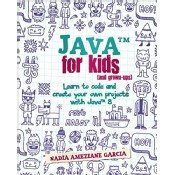
Age Range: 10-12
Best Because: Java for Kids aims to keep things simple and presents only what’s necessary for each step in the learning process. Every chapter builds on those covered previously, and kids discover the basics of Java in short steps that aren’t overwhelming.
C++ Books for Kids
C++ is part of the computer science curriculum at just about every college and university. It’s a fast, robust language used in some of the most complex software available. It’s not the easiest language to learn (that’s probably Python), but those who master C++ will understand much more about how computers work than those who stick to simpler endeavors.
C++ Programming In Easy Steps
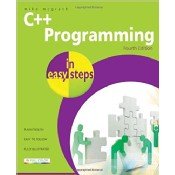
Age Range: 11+
Best Because: The “In Easy Steps” books are generally short (less than 200 pages), colorful, and simple. This book is no exception. Author Mike McGrath presents C++ in a series of easy lessons with plenty of expert tips to help readers adopt the best programming practices while learning one of the most versatile programming languages in existence. Kids can learn the basics of C++ in a very short time with this book and will likely refer to it often over many years.
C++ for Kids
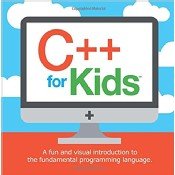
Age Range: 7-9
Best Because: This brief, colorful coding book for kids shows how C++ programming works. Example programs are color-coded so kids understand what the various parts of a program actually do. A legend describes the meaning of each color up front. Words in green, for example, are notes and don’t affect the function of a program.
HTML and CSS Books for Kids
Web pages are built with HTML and styled with CSS. These aren’t true programming languages, but they do provide exposure to text editors and ideas that will be useful to kids who go on to explore languages such as JavaScript or Python. HTML and CSS are also easy to learn and perfect for young kids.
Build Your Own Website: A Comic Guide to HTML, CSS, and WordPress
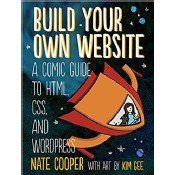
Age Range: 11+
Best Because: In this comic book style guide to building websites, kids learn the HTML markup language. They also get familiar with CSS, the language that controls the styling of web pages. Kids also learn about WordPress, a content management system used for a huge percentage of current websites. WordPress makes building a website easy with templates and pre-written code for a huge array of functions. It’s possible to build and maintain a WordPress website without any coding, but tweaking the code offers infinitely more options for display, interaction, and functionality.
Coder Dojo Nano: Building a Website: Create with Code
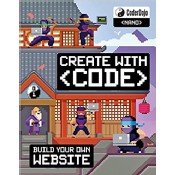
Age Range: 8-12
Best Because: In a mere 96 pages, this coding book for kids guides them through the entire process of building a website. Readers can build a site exactly like the example in the book, but they’re encouraged to experiment and build whatever they like. Subjects covered include the basic code needed to get a page up and running, CSS styling to display elements correctly on the page, and Javascript for interactive features.
Creating a Website: Design and Build Your First Site
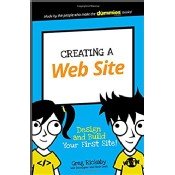
Age Range: 7-11
Best Because: Here’s a guide to everything web design for kids, from planning a site’s structure to adding fine details that make a site extraordinary. So many books focus on coding, but this one provides advice about many of the techniques and processes software engineers use in the real world.
There are tips about wireframing, a technique professional developers use to mockup websites before development. Readers will also benefit from information about site mapping, making a style guide, and fine-tuning a site’s appearance. There’s plenty of HTML and coding instruction, too.
HTML & CSS: Design and Build Websites

Age Range: 13+
Best Because: HTML & CSS: Design and Build Websites is an Amazon Bestseller, and it’s an excellent resource for teens wanting to get into web development. The book avoids the usual dry-and-dusty method of teaching people to code, employing colorful illustrations and accessible instructions. Teens can work through the book from beginning to end or jump to the topic most relevant to them and their coding project.
JavaScript Coding Books for Kids
JavaScript has been around for a long time, but it wasn’t always as important to web development as it is now. Many programmers agree that JavaScript is the future of the internet, and learning this language is beneficial to anyone who wants to build interactive and useful sites.
Computer Coding with JavaScript
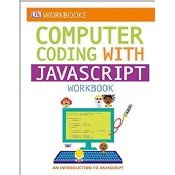
Age Range: 8-12
Best Because: Moving into JavaScript from HTML and CSS can be confusing. That’s because JavaScript is so much more complex and powerful. But Computer Coding with JavaScript presents simple explanations so kids can make the transition smoothly. The book describes how HTML, CSS, and JavaScript work together to power interactive web pages. It’s a short, mostly graphical workbook with step-by-step instructions kids can handle with ease.
JavaScript for Kids; No Starch Press
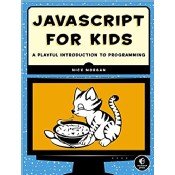
Age Range: 10+
Best Because: Like Python for Kids from the same publisher, this is a comprehensive title for those who really want to dig into code. The 17 chapters in this book discuss everything from arrays and other variable types to game programming. JavaScript offers a myriad of opportunities for creative kids. Whether they want to build games, make animations, or work with virtual reality, JavaScript has the power kids need to turn their ideas into real programs. This book gives them more than enough information to get started in any of these areas.
JavaScript for Kids; For Dummies
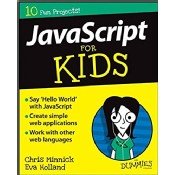
Age Range: 10-13
Best Because: You don’t have to be a kid to enjoy JavaScript for Kids. Just check out the reviews on Amazon. Plenty of adults say they loved this book. If you’re interested in reading about programming to help your child learn how to code, try this book. Readers learn to build fun apps and games, like a calculator and a shopping app. The contents of JavaScript for Kids will take readers far beyond the basics and get them ready to build just about any kind of web project they can dream up.
Recommended: Ultimate Guide to JavaScript Game Development
Get Coding! Learn HTML, CSS, Javascript & Build a Website, App & Game
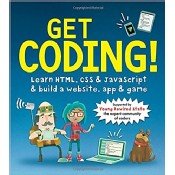
Age Range: 9-12
Best Because: The lessons in this book are presented as a series of missions that teach kids to build web apps and games. The idea is to make learning fun. Kids also get an explanation of the different types of programming languages and what each is good for. Kids who choose to explore other types of coding after finishing this book will know what languages are best suited to the kinds of projects they’d like to create. Students can start with an HTML book like this, then take an HTML, CSS, and JavaScript class to learn more advanced skills.
Mobile Development Books for Kids
Android App Inventor Coding Books for Kids
App Inventor features a block programming interface similar to Scratch. It’s designed to make mobile development easy and is an ideal way to introduce kids to programming for Android.
Building a Mobile App
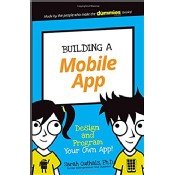
Age Range: 7-11
Best Because: Kids who read Building a Mobile App will learn more than just coding; they’ll learn how to plan and develop their own custom apps. After working through example projects like a photo editor and a mobile game, kids will have the know-how to create all kinds of other apps. This is a book about programming, but it’s also a valuable resource for future software developers because it provides an overview of the app development process used by professionals. The sections on prototyping and creating app skeletons will be particularly valuable to kids who might want to seriously pursue mobile development.
Hello App Inventor
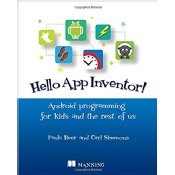
Age Range: 9+
Best Because: Apps built with App Inventor can make use of many smartphone features such as motion sensors, GPS, and the camera. Hello App Inventor shows readers how to take advantage of these capabilities with 30 example projects. At the end of the book, kids also learn how to publish their apps so other people can use them.
Recommended: Coding Toys for Kids
Swift iOS Coding Books for Kids
To build applications for Mac, iPhone, and other Apple products, developers use a language called Swift. When creating this language, software engineers attempted to make it easy enough for people with no experience to learn. It’s a good option for kids who have never programmed and is versatile enough for everything from mobile development to robots.
Coding iPhone Apps for Kids
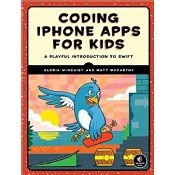
Age Range: 10+
Best Because: Kids don’t need any prior coding experience to start building iPhone apps with this helpful and thorough book about Swift development. The first several chapters introduce the Swift language and coding fundamentals. In the last two sections, kids get to build two real apps: a birthday tracker and a skateboarder game.
Hello Swift
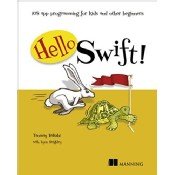
Age Range: 9+
Best Because: One of this book’s authors was only four when he started coding. At nine, he launched his first app. Readers of Hello Swift will learn to build apps they can publish on the iOS App Store. The book takes a step-by-step approach to teaching iOS development and starts with universal programming concepts.
Your child can learn to code from home.
Try our live, online coding classes for kids risk-free.
Game Development Books for Kids
Popular games like Minecraft and Fortnite have made game development a hot topic of interest for many kids. They already have ideas for characters and the types of games they want to build. The next step is to learn the right coding language to make those games a reality. Games can be coded in almost any language from the simplest in Scratch to large multiplayer games in Python.
Scratch Game Programming Books for Kids
Coding Games in Scratch
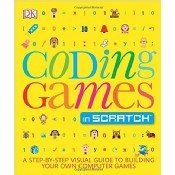
Age Range: 8-12
Best Because: Some programming languages require kids to download several files before even getting started, but that’s not true of Scratch. Kids can start making their own games right in the browser with help from this colorful paperback. Games they’ll build include mazes and puzzles for one or more players. Step-by-step instructions and plenty of images on every page make coding easy.
Code Your Own Games: 20 Games to Create with Scratch

Age Range: 6-11
Best Because: Divided into five progressive levels, the 20 game projects in this short book get kids familiar with the principles of coding and game development. Each game offers kids opportunities to build skills like controlling player interaction, animating objects on the screen, and adding sound. A glossary near the end of the book is an excellent reference for the key ideas.
Star Wars Coding Projects
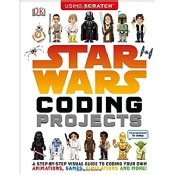
Age Range: 8-12
Best Because: Kids who enjoy Star Wars can learn to code from C3PO, R2D2, and their other favorite characters. Star Wars Coding Projects is all about building games in Scratch with guidance from the Force. Readers don’t need any programming experience to get started with this book because all instructions are accompanied by colorful illustrations.
Game Programming for Teens

Age Range: Teens
Best Because: Some gamers aren’t content with simply playing games; they want to know how to make them. That’s exactly what they’ll learn here. The book introduces a game-specific language called BlitzMax that enables kids to build games for all platforms (Windows, Mac, Linux). Teens will discover techniques for working with graphics, audio files, and everything they need to create fully-functional computer games.
Python Game Coding Books for Kids
Python is a great starting programming language for kids and is used even by professional game developers for planning stages of new games. These books help kids get started learning Python with a focus on game building.
Mission Python
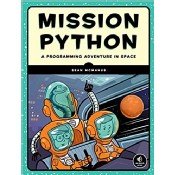
Age Range: 10+
Best Because: Although straightforward enough for kids as young as 10, Mission Python explores the depths of Python game programming that make it exciting for teens and adults. The book centers around the development of a single game and kids build their knowledge by adding more and more features as they work through the material. Mission Python starts with Python essentials and then moves into more advanced concepts like dealing with audio files and 3D graphics.
Invent Your Own Computer Games with Python

Age Range: 10+
Best Because: This Python coding book for kids teaches programming through detailed explanations of several popular games like Hangman and Tic-Tac-Toe. After familiarizing kids with Python through these easy-to-build games, it discusses more complex ideas and finally leaves readers with the knowledge they’ll need to invent their own games.
Your child can learn to code from home.
Try our live, online coding classes for kids risk-free.
Minecraft Coding Books for Kids
Many kids get interested in coding thanks to the hugely popular game Minecraft. The game allows players to create their own mods to add to the worlds they build. These books help give kids the skills they need to mod their own Minecraft worlds and more.
Learn to Program with Minecraft
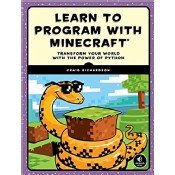
Age Range: 10+
Best Because: Minecraft is a popular 3D game where kids can explore and build structures like castles or forts in a virtual world. Learn to Program with Minecraft shows kids how to expand Minecraft with Python programming. In addition, they’ll learn skills that transfer into other kinds of programming, like game development and building desktop applications.
Minecraft Modding for Kids, for Dummies
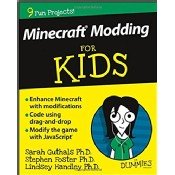
Age Range: 10-13
Best Because: Kids graduate from Minecraft “players” to “modders” with the help of nine projects in JavaScript. Readers need to have experience playing Minecraft, but no previous knowledge of coding is required. Access to an online cheat sheet and other resources come with the book.
Block Breaker
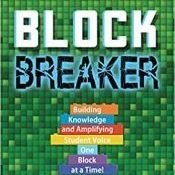
Age Range: 10+
Best Because: In Block Breaker, educator Brian Aspinall explains how Minecraft may be just the right tool to teach your child coding. This book aims to engage learners and empower them to find success with fun ways to practice critical thinking and spatial reasoning. Block Breaker comes complete with lesson ideas and learning strategies
Robotics and IoT Programming Books for Kids
Arduino Programming Books for Kids
An Arduino is a tiny computer that can control all kinds of circuits with little pieces of hardware like sensors, LED lights, and motors. Learning Arduino means more than just learning to code; it involves designing and building real-world projects.
Adventures in Arduino
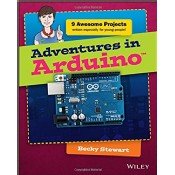
Age Range: 11-15
Best Because: Mechanically inclined kids and future engineers will enjoy the projects covered in this publication. If your child is new to the platform, the book provides an explanation of the Arduino computer and a list of the parts, accessories, tools, and software needed to follow along with the material. The introductory sections include tutorials for downloading and installing the Arduino programming environment. Kids then start working with simple projects like blinking an LED light before progressing into more difficult tasks.
Sylvia’s Super-Awesome Project Book: Super-Simple Arduino
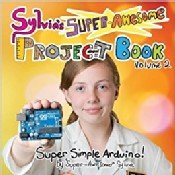
Age Range: 8-12
Best Because: Young inventors and makers can learn how to program the Arduino from Sylvia, an author, illustrator, and fellow kid. Sylvia shows her readers how to build Arduino projects that control lights and make music and more. The projects include detailed explanations of how and why things work, not just instructions for putting things together or copying code.
Your child can learn to code from home.
Try our live, online coding classes for kids risk-free.
Raspberry Pi Books for Kids
You can think of the Raspberry Pi as a step up from the Arduino. The two computers are about the same size, but the Raspberry Pi’s operating system endows it with functionality much more like that of a full-size laptop. Kids can also play games, control robots, and develop many other exciting projects in Python or Scratch.
Raspberry Pi Projects Workbook
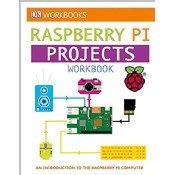
Age Range: 7-12
Best Because: Building games, making music, creating animation: kids will find all of this and more in the Raspberry Pi Projects Workbook. Kids can also learn Scratch and Python in these 40 info-packed and fully illustrated pages.
Adventures in Raspberry Pi
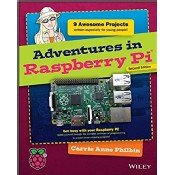
Age Range: 11-15
Best Because: The nine projects covered here get kids up and running with the Raspberry Pi quickly, and the supplemental video lessons should prove invaluable to readers who require a bit more explanation. Concepts covered include programming fundamentals, game programming, graphics creation, and more.
Lego Mindstorms Coding Books for Kids
It’s hard to imagine a more exciting way to learn coding than building and programming Lego robots. That’s the idea behind Mindstorms. Lego produces several kits with all the necessary parts for bots that roll, spin, and even climb. They also have their own coding language that kids use to program their creations.
The Art of Lego Mindstorms EV3 Programming
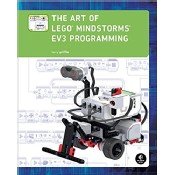
Age Range: 10+
Best Because: Many kids have learned to code by building and programming Lego Mindstorm robots. This comprehensive title shows kids how to use the EV3 Mindstorms programming environment to control their own bots. Kids learn how to build a Lego robot and control it with code.
Building Robots with Lego Mindstorms
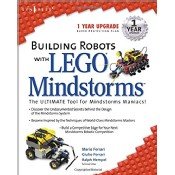
Age Range: 10+
Best Because: In this hefty volume (656 pages), kids can learn about building robots, working with electronic circuits and sensors, and programming Lego Mindstorms. There’s extensive information about gears, motors, pneumatics, and other engineering concepts, all of which are important for serious robotics enthusiasts. Kids who want to build and program Mindstorms will find plenty of ideas and inspiration in this book.
Best Programming Books for Kids by Age Group
Coding Books for Elementary School Students
How to Code a Rollercoaster
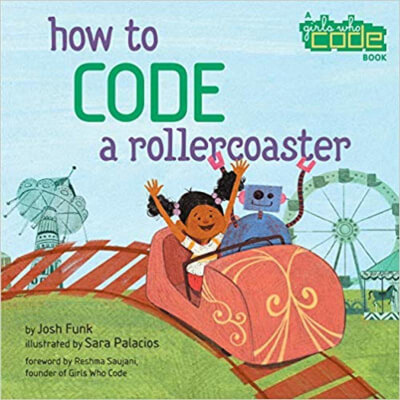
Age range: 3-9
Best Because: This short book is part of the Girls Who Code series, a whole series of coding books for girls that provide an easy breakdown of how code works. Follow the story of Pearl and her robot at an amusement park and how a computer program helped her spend her money on the things she most wants to do. The simple analogies are easy for kids to understand and the explanations of coding concepts are brief but helpful.
Rox’s Secret Code

Age range: 3-9
This story about Rox is one every kid can relate to. Rox has a messy room and her dad wants her to clean it up, but she’d prefer to write code. Kids learn about how she does both by programming a robot to do her chores. When the robot gets out of control, she has to quickly fix her code to prevent some big trouble. There’s a free smartphone app that kids can download to code their own robots, too.
Coding Concepts for Kids: Learn to Code Without a Computer
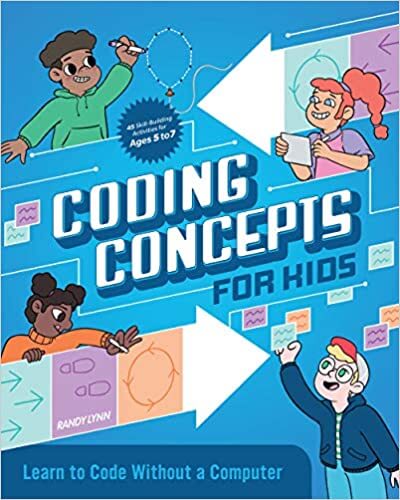
Age Range: 5-7
Best Because: Help kids discover fundamental coding concepts without screen time. This book teaches the core concepts of coding, like algorithms, loops, conditionals, optimization, debugging, and variables, through colorful games and activities right inside the book. All kids will need is a pencil and their imagination to think like a programmer.
MicroWorlds EX Books for Kids
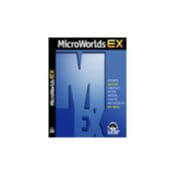
Age Range: 5-9
Best Because: With MicroWorlds, kids learn through a combination of graphical and text-based programming. In this coding book for kids, they’re not stuck with a purely graphical language with “canned” code. They also don’t have to deal with text 100% of the time. MicroWorlds does a good job of blending easy-to-understand tools with powerful and flexible capabilities.
How to Code: A Step-by-Step Guide to Computer Coding
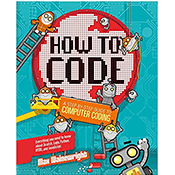
Age Range: 6-11
Best Because: In How to Code, kids learn basic programming concepts like loops, variables, and selections. The book then moves into different coding languages, looking specifically at Scratch, Python, HTML, and JavaScript. The book features playful robot characters, too, to keep kids and teens engaged in and entertained by the subject matter.
Coding Books for Middle School Students
Coding for Kids, For Dummies

Age Range: 10-14
Best Because: Coding for Kids guides young coders through 15 projects that include drawing, animation, and games. Books in the Dummies series typically make extensive use of bulleted lists, bold headings, and warnings to bring important points to the forefront of the reader’s attention. Coding for Kids follows this model perfectly. This book also walks kids through the process of creating a computer program, from coming up with an idea to building and testing it.
Girl Code: Gaming, Going Viral, and Getting It Done
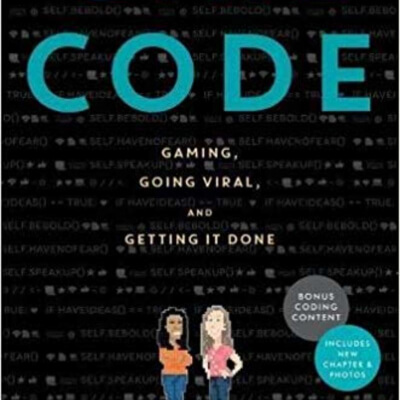
Age range: 10-13
Best Because: Girl Code tells the real-life story of two girls who built a video game that went viral. This is an excellent coding book for kids who want to get a look inside the technology industry. It includes a section specifically to help girls get started with coding.
Emmy in the Key of Code
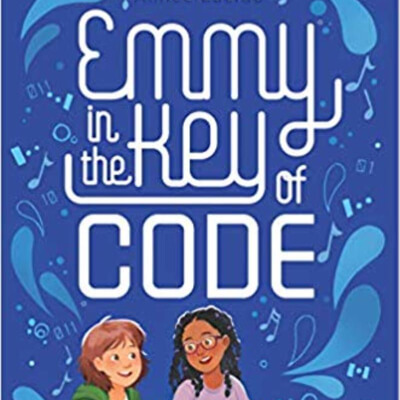
Age range: 10-13
Best Because: This is a coding book about a middle school student and her love for coding and music. Aimee Lucido, the author of Emmy, holds a computer science degree, is a professional coder, and used to write fiction in her spare time. She does a wonderful job describing a character who loves to code but also enjoys the arts. This story mixes poetry, music, and coding, along with strong female characters in good tech positions.
3D Game Programming for Kids: Create Interactive Worlds with JavaScript, Second Edition
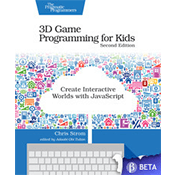
Age range: 10-13
Best Because: This updated version of 3D Programming for Kids encourages kids and teens to move from playing games to creating them. This book includes revised examples to explore, as well as new 3D effects to try. The book works alongside a code editor so that kids can practice what they’re learning.
Coding Books for High School Students
Code for Teens: The Awesome Beginner’s Guide to Programming
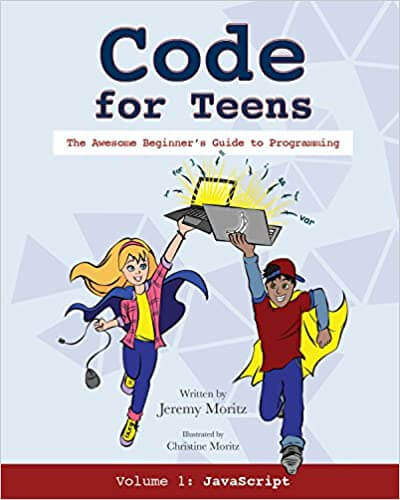
Age Range: 13+
Best Because: A simple starting point for teens interested in coding. Code for Teens uses delightful illustrations, engaging text, and lighthearted humor on almost every page. This book gives teens the foundational knowledge needed to understand JavaScript and uses quizzes, drills, review questions, and simple do-it-yourself projects to reinforce coding concepts.
Coding for Beginners in Easy Steps: Basic Programming for All Ages
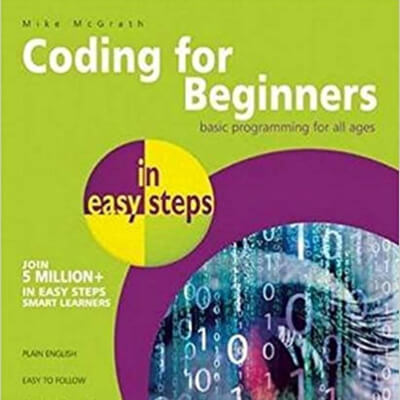
Age range: 14+
Best Because: A general coding book that’s easy enough for beginners of all ages to understand, but full of powerful lessons in coding basics. Coding for Beginners uses Python to teach the basics of computer programming. Each chapter contains several full-color illustrations and plain language tutorials about programming fundamentals. Students will learn about algorithms, object-oriented programming, and much more.
Must Know High School Computer Programming
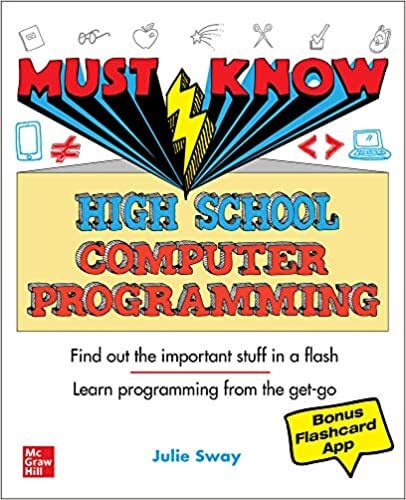
Age range: 14+
Best Because: Made for high school students beginning to code. Teens get a clear explanation with examples that make learning coding concepts quick and painless. This book covers skills that can be applied to a number of courses, including Object Oriented Programming, Game Design, Robotics, AP Computer Science Principles, and AP Computer Science A. Also includes 250 practical review questions to reinforce what students have learned.
Computer Programming: The Ultimate Crash Course to learn Python, SQL, PHP and C++
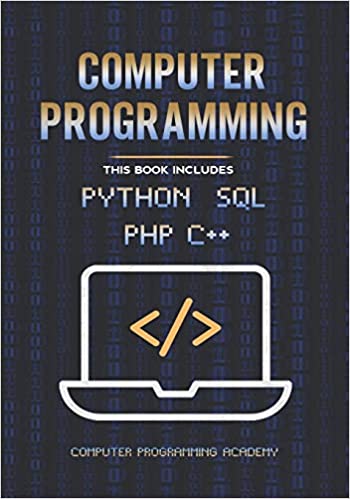
Age range: 14+
Best Because: Learn the most popular coding languages, Python, SQL, PHP, and C++, in the ultimate crash course. This book will show you how to set up your production stack and covers the fundamentals of each language. While not specifically made for teens, it does provide a solid foundation for coding and applying it to data analysis, machine learning, and data science.
Explore Coding Books for Kids to Find the Right Fit
Coding is a vast subject and there are so many ways for kids to get started. Mobile development, web development, game programming, and robotics are fun ways to build solid programming skills.
It may take time to identify the kind of coding your child likes best. Hands-on kids might like Arduino or Lego programming. Gamers may enjoy Minecraft books. All of the books discussed in this article will establish a firm grasp of the basics that will transfer to any language, so don’t be afraid to experiment.
If your child is ready to go beyond the books, take a live, online coding class with CodeWizardsHQ:
Most importantly, we have fun doing it!
